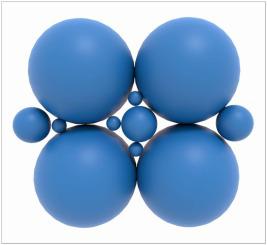Dental Materials ( IF 4.6 ) Pub Date : 2020-09-25 , DOI: 10.1016/j.dental.2020.08.006 Klaus D Jandt 1 , David C Watts 2

|
Objectives
The number of dental nanomaterials has increased significantly over the past years. A variety of commercial dental nanomaterials are available and researched. Nevertheless, how these nanomaterials work, what makes them special and whether they are superior to traditional dental materials is not always clear to dentists and researchers. The objective of this review paper is, therefore, to give an overview of the principles of nanomaterials and basic research and applications of dental nanomaterials.
Methods
The fundamentals of materials science of nanomaterials as well as their advantages and disadvantages are elaborated. The most important dental nanomaterials are discussed. This is mainly based on a survey of the literature and a review of the most frequently cited scientific papers in the international peer reviewed journal Dental Materials over the past five years. The developments of commercial dental nanomaterials as well as aspects of their clinical use are considered in this review.
Results
Nanomaterials have unique structures and properties that distinguish them from other materials. The journal Dental Materials is the journal with the highest numbers of articles and citations on the subject of dental nanomaterials. The most frequently reported dental nanomaterials are nanocomposites, nanoparticles, antimicrobial nanomaterials and bio-mineralization systems. Hallmarks of dental nanomaterials include a set of unique properties and challenges in the preparation of these materials.
Significance
By understanding the physical principles of dental nanomaterials, their strengths, limitations and their specific benefits will be better appreciated. Dental nanomaterials have potential for the future but currently do not always exhibit superior properties, for example in clinical situations.
中文翻译:

牙科纳米技术:牙科纳米材料的现状和未来展望
目标
在过去几年中,牙科纳米材料的数量显着增加。有多种商业牙科纳米材料可供使用和研究。然而,牙医和研究人员并不总是清楚这些纳米材料的工作原理、它们的特殊之处以及它们是否优于传统牙科材料。因此,本综述的目的是概述纳米材料的原理以及牙科纳米材料的基础研究和应用。
方法
阐述了纳米材料的材料科学基础及其优缺点。讨论了最重要的牙科纳米材料。这主要是基于文献调查和对国际同行评议期刊Dental Materials过去五年中最常被引用的科学论文的回顾。这篇综述考虑了商业牙科纳米材料的发展及其临床应用的各个方面。
结果
纳米材料具有区别于其他材料的独特结构和特性。Dental Materials期刊是牙科纳米材料领域文章和引用次数最多的期刊。最常报道的牙科纳米材料是纳米复合材料、纳米颗粒、抗菌纳米材料和生物矿化系统。牙科纳米材料的特点包括一系列独特的特性和这些材料制备过程中的挑战。
意义
通过了解牙科纳米材料的物理原理,可以更好地了解它们的优势、局限性和特定优势。牙科纳米材料在未来具有潜力,但目前并不总是表现出卓越的性能,例如在临床情况下。











































 京公网安备 11010802027423号
京公网安备 11010802027423号